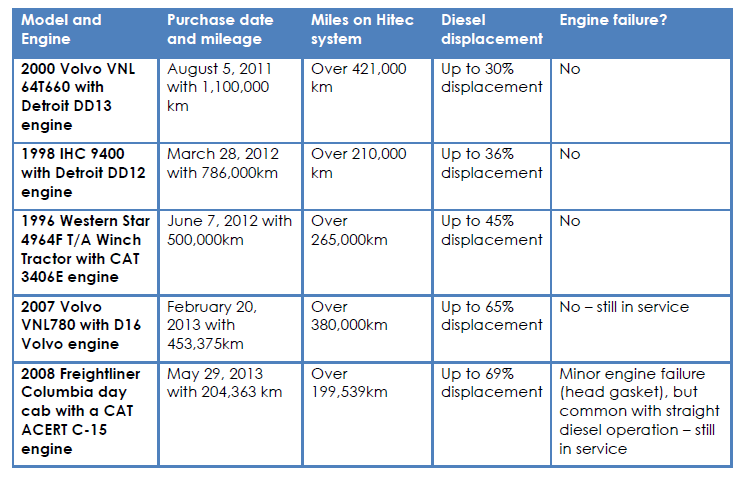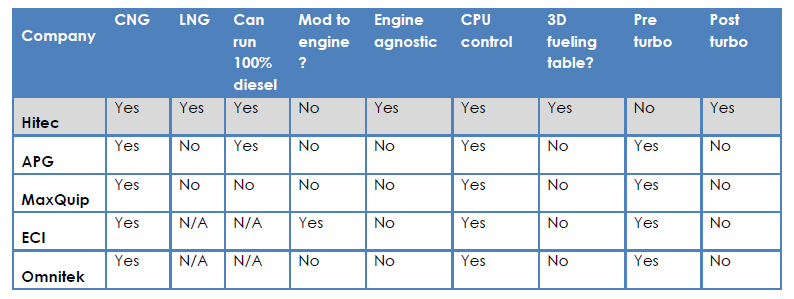· Parts failure – Hitec mitigates this risk by installing standard readily available parts. Any parts failure can by addressed by a regular diesel technician. · Natural gas engine shut down if the engine temperature reaches above 1200°C or overrevs. The Hitec’s software system constantly monitors the critical engine parameters and performance, and will automatically switch to 100% diesel within 3 seconds if any engine anomalies outside of operating specifications are detected.




